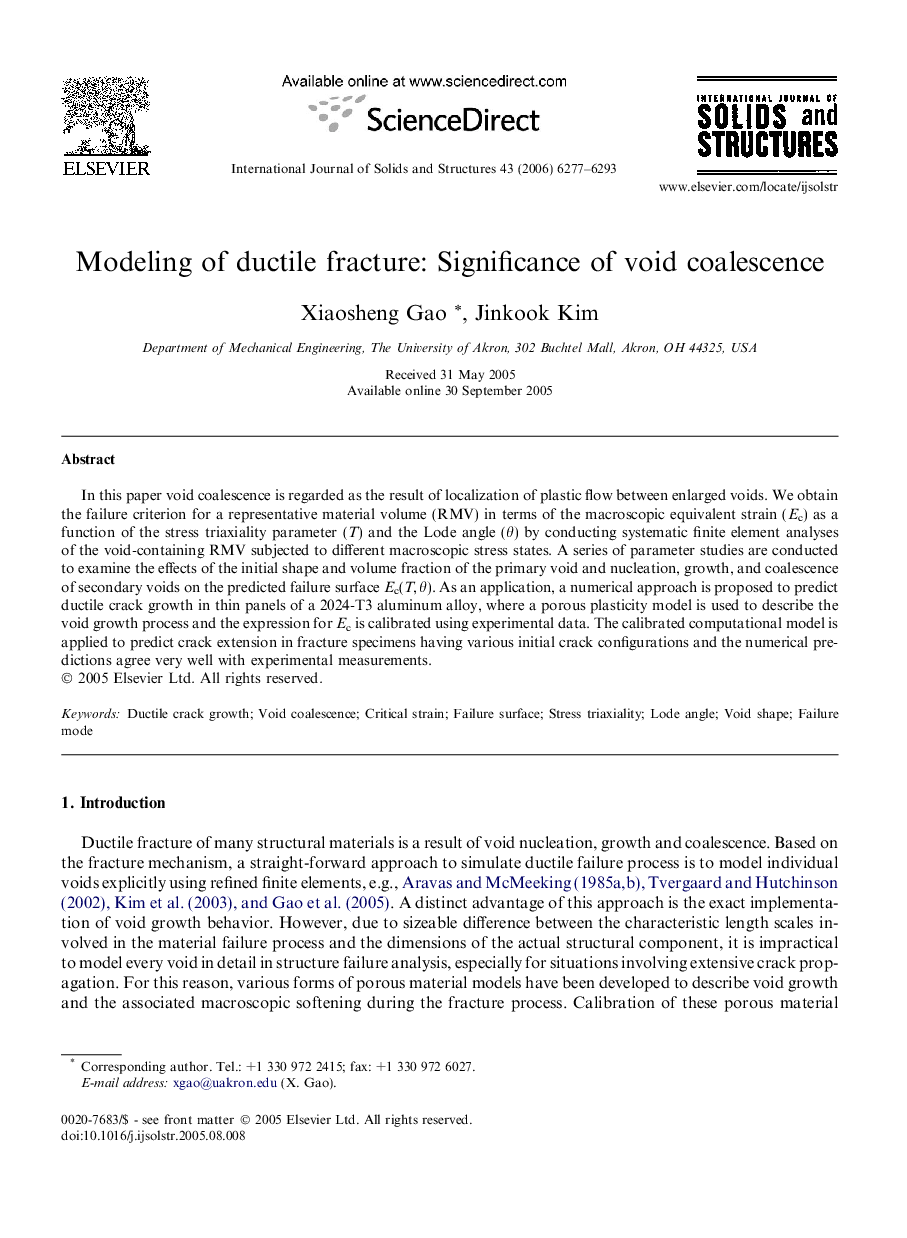| Article ID | Journal | Published Year | Pages | File Type |
|---|---|---|---|---|
| 280129 | International Journal of Solids and Structures | 2006 | 17 Pages |
In this paper void coalescence is regarded as the result of localization of plastic flow between enlarged voids. We obtain the failure criterion for a representative material volume (RMV) in terms of the macroscopic equivalent strain (Ec) as a function of the stress triaxiality parameter (T) and the Lode angle (θ) by conducting systematic finite element analyses of the void-containing RMV subjected to different macroscopic stress states. A series of parameter studies are conducted to examine the effects of the initial shape and volume fraction of the primary void and nucleation, growth, and coalescence of secondary voids on the predicted failure surface Ec(T, θ). As an application, a numerical approach is proposed to predict ductile crack growth in thin panels of a 2024-T3 aluminum alloy, where a porous plasticity model is used to describe the void growth process and the expression for Ec is calibrated using experimental data. The calibrated computational model is applied to predict crack extension in fracture specimens having various initial crack configurations and the numerical predictions agree very well with experimental measurements.
